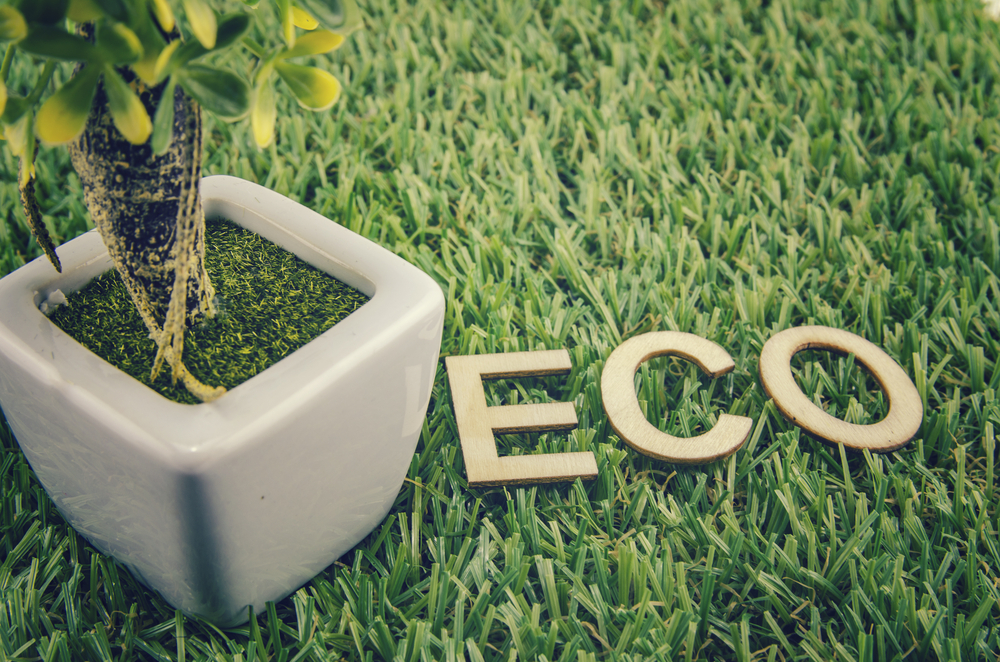Artificial grass and the environment are regularly a hot topic in the news. We hope in this article to balance out the negative stories you may have read and try to tone down some of the more catastrophic and highly emotive language used.
Is artificial grass bad for the environment?
A premium artificial grass product such as that supplied by us at Artificial Lawn Company is manufactured using polypropylene or polyethene. Due to the strength and durability of the product, it can continue to give excellent service for at least 10 years (in areas of heavy traffic) and often up to 20 years in gardens where there is minimal footfall.
Cheap, mass-produced fake lawns that are often imported from China and are sold on rolls in major DIY stores and other suppliers do not have the same levels of durability and longevity. More often than not, these cheaper versions are not installed properly and end up in landfill sites after being ripped up and discarded due to poor performance and messy appearance.
With our long-earned understanding and experience of carrying out artificial grass installation projects across Essex and Kent, we have a deep knowledge of how homeowners want to protect the environment, as well as find a solution to their own garden issues. It is for this reason that we pride ourselves on approaching design projects with a keen eye on developing an eco-friendly artificial grass solution.
Artificial Grass and the Environment
For this reason, we believe that artificial lawn is not used to replace real grass. Rather, it Is an excellent alternative to other options, such as paving, decking or concrete. There are often areas of a garden that are badly drained, or too much in the shade, or steeply sloping, where natural grass is difficult to grow and maintain. Restoring these areas with low-maintenance artificial lawns, combining the final result with more natural landscaping options to create a more biodiverse environment, is giving homeowners the best of all worlds.
We work with many older couples and families of disabled children who cannot cope with the high-maintenance requirements of lawns but don’t want to have the harsher edges that hard-standing materials can sometimes give. We work with them to establish a design that combines elements of a garden that is easy to maintain but still encourages biodiversity while significantly reducing the maintenance element of their garden. Suggestions for native potted plants or wildflower seeds in a section of the garden create spaces for the creatures that may otherwise lose out from an artificial lawn.
The Best Eco-Friendly Artificial Grass in the UK
We are particularly proud of the fact that we are one of the first artificial lawn suppliers to launch a fully recyclable artificial grass product. The traditional latex backing we use in most of our products has been replaced with a polypropylene backing in our Landscape PET lawn. This means that when the lawn has come to the end of its (long) 10 to 20-year life span, it can be lifted up and put straight into the recycling process without any additional costly and complicated steps.
Behind the scenes, the artificial grass industry has long been working towards greater sustainability, which is why the longevity of a product is so important when taking into account its overall impact on the environment. The challenge we had at Artificial Lawn Company was to find the right combination without losing any of the innate quality in our products in terms of performance and durability. Trialling products manufactured from recycled plastic compromised the quality of the product too much.
Our new recyclable product is manufactured from virgin plastic but can be recycled simply and cost-effectively to be used in any number of different products.
Is artificial grass better for the environment?
It is probably more apt to ask yourself the question: is artificial grass better for your environment? If you are contemplating a potential sustainable artificial grass solution for your Chelmsford garden, you need to take into account the following:
- Can you find a good balance of artificial and natural lawns that will still encourage biodiversity and wildlife while solving hard-to-reach and stubborn areas where it is difficult to grow anything at all?
- Would it be beneficial to you both financially and environmentally to extract the optimum use out of the installation for a minimum of 10 years, if not more?
- Does it make a difference to your own ecological concerns, that should you decide to change your mind, the lawn you lay could be quickly and easily recycled and used for future product development?
Most responsible artificial lawn providers in the UK are as keen as everyone else to encourage biodiversity and protect the environment. If you are interested in exploring ways in which we can help you to create the perfect landscape incorporating artificial lawns, do not hesitate to drop us a line, and we will get straight back to you.
